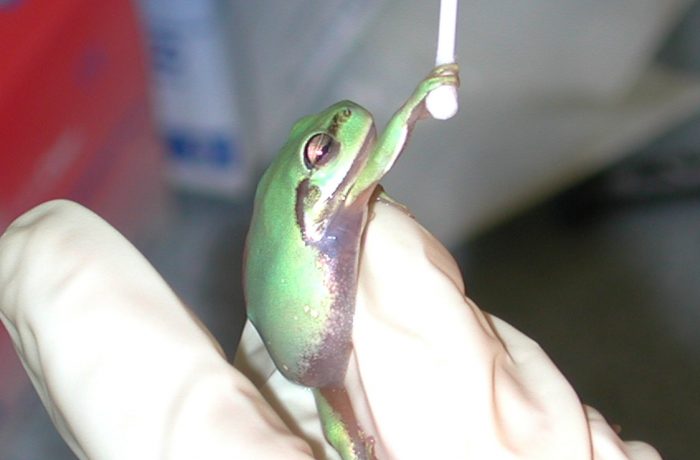In the early days of chytrid fungus testing (ca. 2007), there was a need for relatively large-scale screening of locations or amphibian populations for the presence or absence of Batrachochytrium dendrobatidis. At the time, this could only be done by collecting and testing skin swab samples from individual animals – a costly endeavor for large populations. In response to this, Pisces developed a procedure for testing “pooled” skin swab samples. The procedure relied on concentrating B.d. zoospores from swabs pooled in a single large tube preserved in ethanol by centrifugation (we determined that B.d. zoospores are negatively buoyant in ethanol). Reconstruction experiments demonstrated that DNA extractions on up to eight swabs in a tube could be prepared with little or no loss of B.d. detection sensitivity relative to individual swab samples. Depending on the situation, swabs could be pooled by species, location, or expectations of B.d. presence or absence. While this technique allowed a considerable decrease in time and cost for chytrid testing, a shortcoming was that it was no longer possible to determine incidence level with pooled swab samples – there was little difference in PCR signal between one swab out of eight in a pool versus all eight swabs being B.d. positive. As a way around this drawback, we developed an intermediate technique we called “pooled at Pisces by ½ volume.” In this procedure, samples were collected as individual swab samples, then at Pisces we combined ½ of the total ethanol volume from each individual sample into a larger tube, then used the pooled swab DNA extraction & PCR testing procedure. If a pooled swab sample was PCR positive, at the sample submitter’s request, we could go back and individually test the remaining ½ volume from each of the individual samples in the pool. This provided a method to economize when screening large numbers of samples but still be able to determine incidence level. Theoretically, testing only ½ of the ethanol from an individual sample, either in the pool or individually, should reduce the detection sensitivity by 2-fold. However, empirically we have found no evidence for this – we have only very, very rarely had ½ volume pooled samples that were B.d. PCR positive while the ½ volume individual samples were PCR negative or vice versa. We think these three technique schemes form an elegant trio allowing tailoring of B.d. PCR testing to the specific situation, needs and budget of the sample collector.

